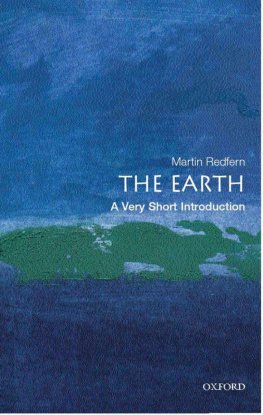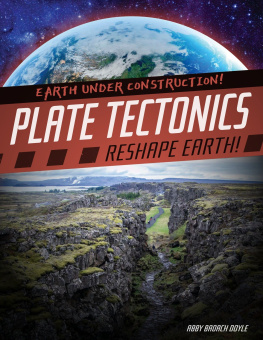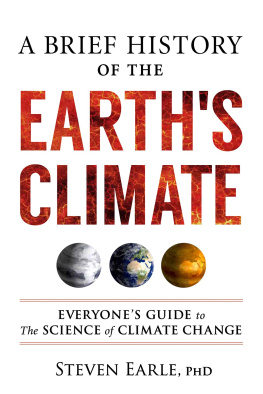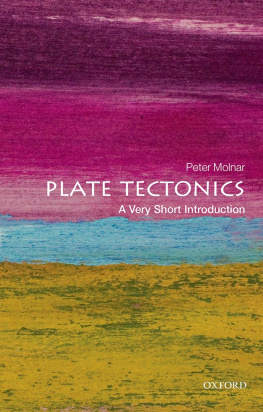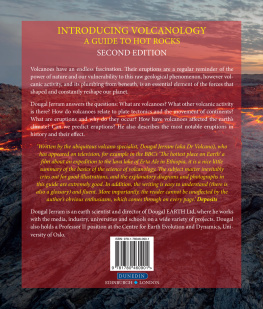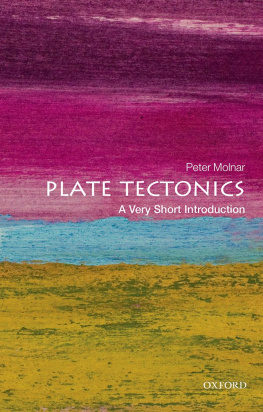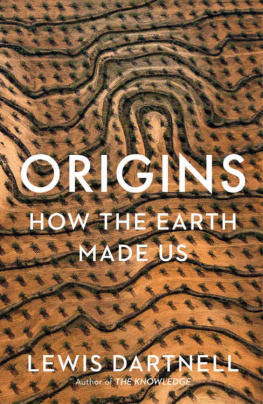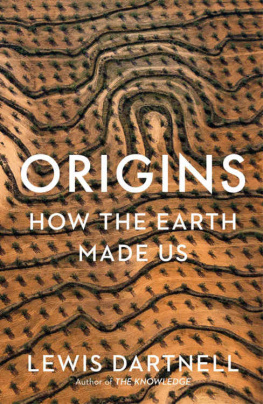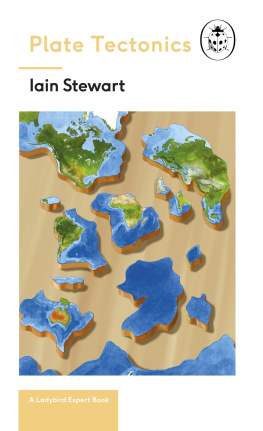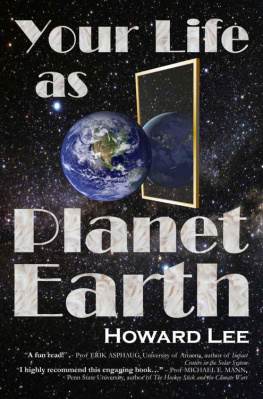ideas
you really need to know
earth

Martin Redfern

Contents
ORIGINS
INSIDE THE EARTH
SURFACE SYSTEMS
LIVING PLANET
EARTH FUTURES
Introduction
We inhabit a wonderful planet. We are fortunate if we can take the time to marvel at its beauty, gaze in awe at its majesty and be thankful for the gifts it brings. But for most of our busy lives, we scurry about on the surface and forget two important dimensions: depth and time. In this book, I hope to remind us of those forgotten dimensions.
Consider for a moment what lies beneath your feet not just the familiar earth and rock of the surface layers, but deep down. As close to you now as the distance many of us commute every day lies a place no one has visited and conditions of temperature and pressure we can scarcely imagine. Travel less than the distance of a transatlantic flight and you would find yourself in an incandescent world of molten metal. The Earth is not just sitting there like a block of concrete waiting for us to walk all over it. It is a living, dynamic planet. Solid rocks are on the move as continents drift, volcanoes erupt and the vast, deep mantle slowly churns. Neither are the rocks below the surface immune from the processes going on above them. Water, air and life itself are in constant dynamic interaction with the geology. Without oceans, we would not have continents. Without life, we would not have our atmosphere or a climate in which we could live. The natural cycles of our planet have supported life for billions of years. We interfere with them at our peril.
The other dimension opened up through understanding the processes at work in our planet is the dimension of time. Not just time as in lunchtime or even lifetime, but deep time. It takes a radical change in the way we think in order to get our minds around time when it is measured in tens and hundreds of millions of years, but that is what we must do if we are to understand our home. Once we have made that change, we start to realize that everyday processes extended over deep time can build and destroy mountain ranges, open up oceans and split continents apart. Deep time can create new species or drive them to become extinct. Our human existence scarcely registers as one tick on the clock face of deep time and yet we have already changed the planet beyond recognition. Perhaps if we come to understand it better, we will treat our world more kindly.
Birth of Earth
We are all made of stardust. The primordial hydrogen and helium created in the Big Bang 13.7 billion years ago has been cooked in the nuclear furnaces of generations of stars to produce the carbon, oxygen and nitrogen of our bodies; and the silicon, aluminium, magnesium, iron and all the rest of the elements that make up our planet.
Stardust memories Stars shed their outer layers towards the end of their lives. Massive stars can no longer support their own weight and they collapse, triggering a supernova explosion that scatters their ashes in great clouds of dust and molecules. It was out of such a cloud that our solar system was born. Every molecule in your body contains elements that were cooked in stars. Every atom of gold in the ring on your finger was created in a supernova.
The presence of decay products of short-lived radioactive isotopes in ancient meteorites suggests that these elements had their origins in a nearby supernova explosion not long before the solar system formed. Indeed, it may have been such an explosion that triggered the initial collapse of the solar nebula.
Accretion As the gas and dust were drawn towards the centre where the Sun would eventually form, angular momentum in the gently rotating nebula would have flattened the material out into a disc. For a long time that was just theory, but now powerful telescopes can see it happening in other stellar nurseries. For example, the star Beta Pictoris has a clearly visible disc of dust and rocky grains around it, which could be forming into planets right now. The detection of so-called exoplanets around over a thousand other stars suggests that planetary formation frequently accompanies starbirth.
Catch a falling star
The first solid grains to form in the young solar nebula were chondrules. These are roughly spherical grains of silicate rock, ranging from a fraction of a millimetre to a centimetre in diameter. They appear to have formed as molten droplets when silicate dust was heated to around 1,500 degrees Celsius, presumably close to the new Sun or perhaps by radioactivity. They are found today in about 80 per cent of all the meteorites that land on Earth and can be dated with amazing accuracy. At 4,567 million years old (give or take 0.5 million years), they are the oldest things in the solar system.
It is generally agreed that the planets in our solar system built up by a process called accretion, with small grains bumping into one another and collecting together. The first part of that process is the hardest to understand, as there would be little gravity to hold the clumps together and collisions would tend to break them up again. It is possible that concentrations of grains may behave like a kinetic liquid, holding together and only occasionally gaining enough energy to splash out of the cluster. If the relative velocities of the grains were slow enough, they would begin to stick together. Once they had reached the size of a few metres in diameter, gravity would take over, drawing more and more material together.
Separation Gravitational energy, the heat of radioactive decay and the energy released by the impacts of collisions would have led to melting, eventually enabling the heaviest elements such as iron and nickel to sink down and form a core in a body that is now roughly spherical and perhaps tens or hundreds of kilometres in diameter. That body would continue to mop up remaining dust and larger fragments to form a smaller number of protoplanets. Collisions between these would be less frequent but more violent.
The wind from the Sun The formation of the Sun probably only took about 10,000 years, by which point enough matter had been squashed together so that it reached the temperatures needed for nuclear fusion to begin and the Sun to start to shine. That resulted in a strong solar wind of particles blowing out through the young solar system. It would have stripped away any early atmosphere of hydrogen and helium from the Earth, leaving the more resistant rocks of the planet. The bulk of the gas collected further out to form the giant gas planets, Jupiter and Saturn. Volatile material such as methane and water condensed even further out, forming the icy bodies of the outer solar system: dwarf planets such as Pluto, ice moons, Kuiper belt objects and comets.
Stellar alchemy
Stars are nuclear furnaces. Like hydrogen bombs, they convert the most abundant elements in the universe, hydrogen and helium, into heavier elements, in the process releasing the energy that makes stars shine. Ordinary stars produce the elements of life including carbon, nitrogen, oxygen and those that make up the bulk of the Earth such as sodium, potassium, calcium, aluminium and silicon. As a star ages, it sheds these elements off into space. Some stars produce so much carbon that they are surrounded by clouds of soot. The endpoint in that sequence is iron. To make anything heavier requires more energy than it releases. So, when the heart of a massive star has turned to iron, nuclear fusion stops. The star can no longer support its great mass and it collapses, triggering an incredible explosion that blows the star apart and creates the full range of heavy elements right the way down to uranium.


